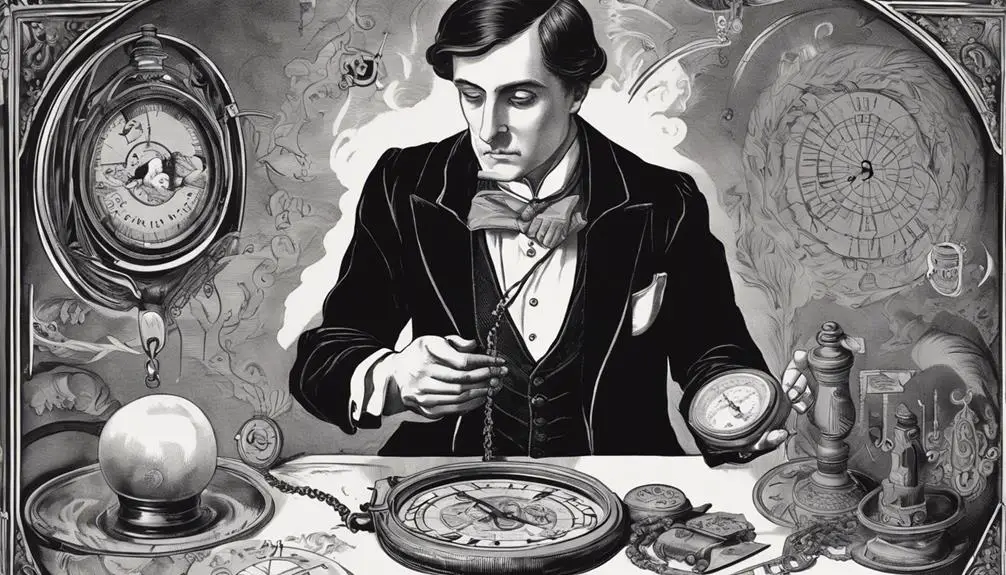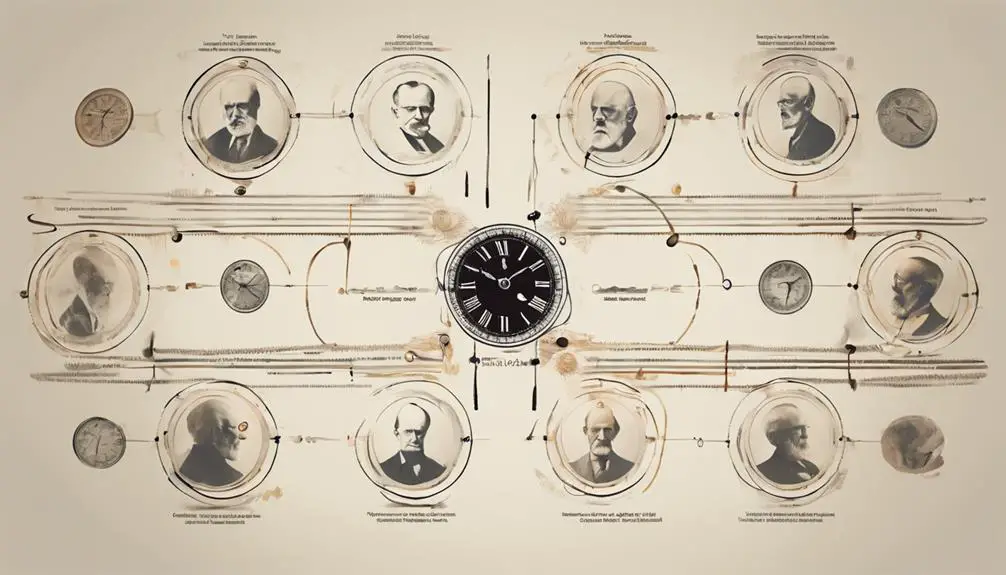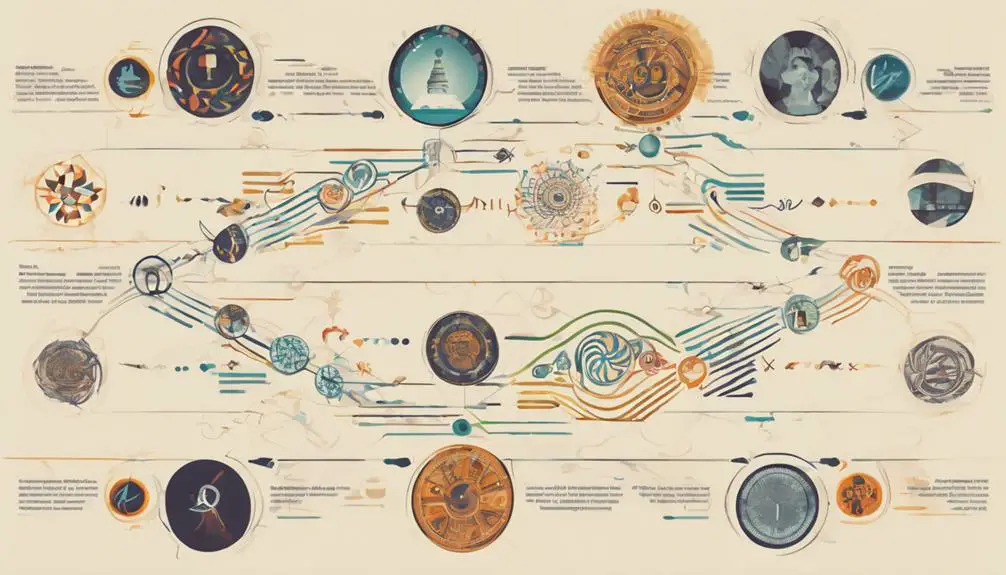Origins of Hypnosis Timeline
Why Have Hypnotic Suggestion Methods Evolved Over Time?
February 14, 2019 - Origins of Hypnosis Timeline
The evolution of hypnotic suggestion methods has progressed due to a blend of historical influences, scientific discoveries, and societal changes. Early techniques from Franz Mesmer emphasized subconscious manipulation using gestures, eye contact, and verbal cues. Mesmerism's impact paved the way for modern hypnotic practices by highlighting the power of suggestion. Freud's integration of subconscious elements further enriched hypnotic methodologies, focusing on unconscious processes and therapeutic dynamics. Recent neuroscientific insights have unveiled the neural mechanisms behind hypnosis, showcasing its potential in modulating brain function. Overall, cultural acceptance and exchange of ideas have propelled hypnosis as a valuable therapeutic tool.
Early Hypnotic Techniques

Early hypnotic techniques in the field of psychology have undergone significant evolution over the centuries, reflecting the intersection of cultural practices, scientific understanding, and therapeutic approaches.
One of the earliest forms of hypnosis, known as animal magnetism, was introduced by Franz Mesmer in the 18th century. Mesmer believed that individuals possessed a magnetic fluid that could be influenced by external factors. This concept laid the foundation for hypnotic practices by emphasizing the role of suggestion and manipulation of this magnetic fluid to induce trance-like states in patients.
Animal magnetism was characterized by Mesmer's use of hand gestures, eye contact, and verbal suggestions to alter the magnetic fluid within a person's body. While Mesmer's theories were later discredited, his techniques paved the way for the development of modern hypnosis.
The emphasis on suggestion and the power of the subconscious mind in early hypnotic practices continues to influence contemporary therapeutic approaches, highlighting the enduring impact of animal magnetism on the evolution of hypnotic techniques.
Influence of Mesmerism
The influence of Mesmerism, particularly Franz Mesmer's concept of animal magnetism, persists in shaping the foundational principles of hypnotic suggestion methods evolution within the realm of psychology.
Mesmerism, a term derived from Franz Mesmer's practices in the 18th century, laid the groundwork for understanding how suggestion and trance states could influence individuals' behaviors and perceptions. Mesmer believed that an invisible force, which he termed animal magnetism, flowed through living organisms and could be manipulated to induce healing and altered states of consciousness.
Mesmer's techniques involved using hand gestures, magnets, and verbal commands to purportedly realign this magnetic fluid within the body, leading to various outcomes such as pain relief and improved health.
While Mesmer's methods were later debunked and discredited as pseudoscience, they sparked interest in the power of suggestion and paved the way for the development of modern hypnotic practices.
The historical background of Mesmerism continues to influence contemporary hypnotic suggestion methods, emphasizing the significance of suggestion, rapport, and altered states of consciousness in therapeutic settings.
Contributions of Freud

Freud's contributions to the evolution of hypnotic suggestion methods within psychology are significant in highlighting the integration of subconscious processes and psychoanalytic principles into the practice of suggestion. Freud's work emphasized the role of the unconscious mind in shaping behaviors and experiences, paving the way for a deeper understanding of how suggestions could tap into hidden desires, fears, and motivations. His exploration of concepts such as repression, transference, and the interpretation of dreams influenced the development of hypnotic techniques aimed at accessing and addressing these underlying psychological dynamics.
The Freudian legacy in hypnotic suggestion methods also underscored the importance of the therapeutic relationship and the power dynamics between the hypnotist and the individual being hypnotized. This psychoanalytic approach brought attention to the significance of trust, rapport, and the exploration of unconscious conflicts during suggestion sessions.
Modern Neuroscientific Insights
Recent advances in neuroscience have shed light on the underlying mechanisms of hypnotic suggestion, providing valuable insights into the neural processes involved in suggestibility and altered states of consciousness. Through neuroimaging techniques such as fMRI and EEG, researchers have been able to observe changes in brain activity during hypnosis, offering a glimpse into how suggestion influences cognitive processes.
Studies have shown that hypnotic suggestion can modulate activity in regions associated with attention, perception, and self-awareness. For instance, increased connectivity between the prefrontal cortex and the anterior cingulate cortex has been linked to enhanced focus and reduced awareness of external stimuli under hypnosis.
Moreover, neuroscientific investigations have highlighted the role of suggestibility in shaping neural responses to hypnotic cues. Individuals who are more receptive to suggestions exhibit distinct patterns of brain activation compared to less suggestible individuals when exposed to similar hypnotic inductions. Understanding the neural underpinnings of hypnotic suggestion not only enriches our knowledge of altered states of consciousness but also opens new avenues for exploring the therapeutic potential of hypnosis in modulating brain function and cognitive processes.
Cultural Shifts in Hypnosis

Exploring the cultural dynamics influencing contemporary perceptions and applications of hypnosis reveals a nuanced landscape of evolving practices and beliefs.
Societal perceptions of hypnosis have shifted over time, with a significant increase in its acceptance and use in therapeutic applications. While hypnosis was once primarily associated with mesmerizing stage performances and hypnotic entertainment, it is now increasingly recognized for its potential in promoting psychological well-being and treating various conditions.
Cross-cultural influences have played a crucial role in shaping the way hypnosis is viewed and utilized globally. Different cultural perspectives have led to variations in the acceptance and integration of hypnosis into mainstream healthcare practices. As societies become more interconnected, the exchange of ideas and practices has contributed to the evolution of hypnosis as a therapeutic tool.
Frequently Asked Questions
How Do Hypnotic Suggestion Methods Vary in Different Cultures?
Hypnotic suggestion methods vary across cultures due to cultural differences and historical influences. Different societies have unique beliefs, practices, and perspectives on hypnosis, shaping how it is used and perceived within diverse cultural contexts.
Can Hypnotic Techniques Be Used for Entertainment Purposes?
Hypnotic techniques are commonly employed for entertainment purposes, particularly in stage shows. While such performances can captivate audiences, skepticism exists regarding the extent of psychological manipulation involved and the necessity of obtaining consent.
Are There Ethical Concerns With Using Hypnotic Suggestions?
Ethical considerations surrounding the use of hypnotic suggestions are paramount, as there are potential risks involved in influencing individuals' behaviors and thoughts. Safeguards must be in place to protect participants' autonomy and well-being.
What Role Does Technology Play in Modern Hypnosis Practices?
Modern hypnosis practices leverage technology like virtual reality to enhance suggestion delivery. Brainwave entrainment tools synchronize brain activity for deeper trance states. These advancements offer innovative ways to induce hypnosis, expanding therapeutic possibilities.
Can Hypnotic Suggestions Help in Treating Specific Medical Conditions?
Hypnotic suggestions, a form of alternative therapy, show promise in treating specific medical conditions by tapping into the mind's healing power. Research indicates potential benefits in areas like pain management, anxiety, and even certain physical ailments.
Conclusion
In conclusion, the evolution of hypnotic suggestion methods can be attributed to the early techniques used in mesmerism. The contributions of Freud, modern neuroscientific insights, and cultural shifts in the understanding and application of hypnosis have all played a role in shaping the way hypnotic suggestion methods have developed over time. This has led to a more nuanced and scientifically informed approach to the practice of hypnosis.
